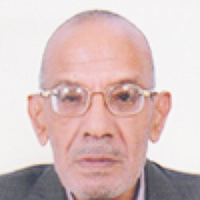Parathyroid Functions in Thalassemia Major Patients
Published on: 29th August, 2017
OCLC Number/Unique Identifier: 7317596427
Background: Hypoparathyroidism is well known to occur in thalassemia major patients, but it is thought to be uncommon and its incidence is considered to be decreasing with improvements in chelation therapy. The objective of this study was to assess the prevalence of parathyroid dysfunction in the first decade of life of the patients with thalassemia major.
Patients and Methods: Ninety children with beta-thalassemia major (55 males and 35 females) with a mean age of 7.17±3.78 years (1-13 years) and age and sex matched control group of 60 healthy children (36 males and 24 females) with a mean age 6.98±3.66 years (1-13) years. Serum parathyroid hormone (PTH), serum total Calcium (Ca), serum phosphorus (P), serum alkaline phosphatase (ALP), serum 25-hydroxyvitamin D (25-OHD) and serum ferritin levels were measured.
Result: PTH levels were higher than normal range in 23 (25.6%) patients with a mean value of 75.2±31.3 µg/mL compared to those having normal range level (35.3±15.2 µg/mL). Ca levels were found low in 11 patients (12.2%), and P levels were found high in 2 (2.22%) and low in 4 (4.44%) patients while high ALP levels were found in 6 (6.67%) patients. 25-OHD levels were low in all patients with a mean value of 24.95±5.82.
Conclusion: Reports in the literature indicate that parathyroid dysfunction due to iron overload generally occurs in 2nd or 3rd decade of patients with thalassemia major. However, our study shows that PTH due to iron overload may develop in a significant number of thalassemia major patients, therefore, all thalassemics should be carefully watched for endocrine organ function such as hyperparathyroidism might occur even in the first decade of the patients with thalassemia major.
Case Report of a Child with Beta Thalassemia Major in a Tribal Region of India
Published on: 8th September, 2023
Introduction: Thalassemia is an inherited blood disorder of haemoglobin (Hb) synthesis, which affects different regions around the world. India has the largest number of children with beta-thalassemia major in the world, particularly in the tribal population. Heterozygous conditions are milder and even go unreported than the condition of homozygous where regular blood transfusion is required.Case report: This report focuses on a case of major beta-thalassemia in a child, whose parents are beta thalassemia minor to intermediate conditions, and who was treated by blood transfusion once a month. However, Thalassemia may be cured by allogeneic hematopoietic stem cell transplantation, although not everyone is a good candidate. Genetic counselling, prenatal diagnosis, and selective termination of affected fetuses are effective ways to control thalassemia.Discussion and conclusion: The paper reports a unique case of Thalassemia in rural India. The blood disorder while commonly presented in a juvenile whose parents were Thalassemia positive resulted in the termination of a fetus diagnosed with it. It archives the story of the parents who are now in the process of planning future offspring while mitigating disease risk. The case leads the way for effective management and containment of hereditary genetic disorders through carrier detection while planning alliances and offspring.




